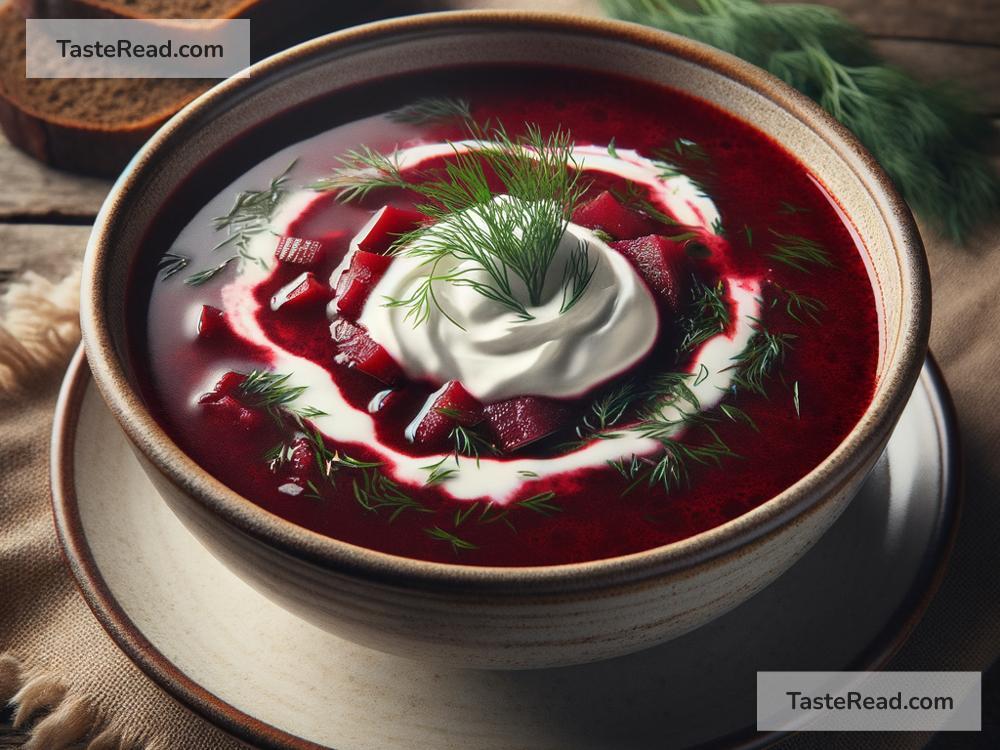Exploring Rich Borscht Soups in Eastern Europe
Eastern Europe, a region known for its vivid history, diverse cultures, and, notably, its unique and satisfying cuisine, offers a culinary journey like no other. Among its most celebrated dishes is borscht, a soup that stands as a symbol of Eastern European hospitality and creativity. This hearty, vibrant soup varies from country to country, city to city, and even family to family, making borscht not just a dish but an exploration of culture and tradition.
Borscht, at its most basic, is a soup made with beetroots, which give it a distinctive deep red color. However, to think of borscht as merely a beet soup would be to overlook the rich tapestry of flavors and variations that this dish encompasses. From Ukraine to Poland, from Russia to Romania, borscht is more than a meal; it’s a celebration of the local produce and seasonal ingredients intertwined with centuries of culinary traditions.
The Ukrainian Borscht
Start your journey with the Ukrainian version, arguably the most famous iteration of borscht. Here, it’s not just a soup but a national dish, deeply embedded in the country’s culture. Ukrainian borscht is usually prepared with beef or pork broth, making it rich and filling. Besides beetroots, it contains potatoes, cabbage, carrots, onions, garlic, and sometimes even beans and tomatoes. Served with a dollop of sour cream and a sprinkle of fresh dill, Ukrainian borscht is a hearty meal that encapsulates the warmth and generosity of Ukrainian hospitality.
The Polish Barszcz
Cross the border into Poland, and borscht transforms into barszcz. Polish barszcz tends to be thinner and is often served clear, without the multitude of solid ingredients found in the Ukrainian version. Traditionally enjoyed during Christmas Eve dinner, barszcz in Poland is a testament to the soup’s versatility, often served with small dumplings filled with meat or mushrooms, known as uszka, meaning ‘little ears’ because of their shape.
The Russian Borsch
In Russia, borsch is a little different again. While sharing similar base ingredients, Russian borsch might include beet greens and is often served with a piece of meat in the bowl. A distinctive feature of Russian borsch is the addition of smetana, a type of sour cream, which adds a rich, tangy flavor to the soup. This version might also be served with a slice of dark rye bread, perfect for dipping.
The Romanian Borș
Venturing into Romania, the soup takes on a new form as borș. Romanian borș is unique because it’s soured with fermented wheat bran, which gives it a distinctive tangy flavor. It’s commonly made with pork, chicken, or even fish, and it’s chock-full of vegetables. This version of the soup speaks to the Romanian penchant for combining different tastes and textures in their cuisine.
Beyond Borders
The beauty of borscht lies not only in its variations but in the stories each bowl tells. It’s a reminder of the times when families gathered to prepare the soup, each member contributing to its making, a tradition that’s still very much alive in many parts of Eastern Europe. In exploring the different versions of borscht, one doesn’t just taste a dish but experiences a piece of Eastern European life, with all its complexities, challenges, and celebrations.
Making Your Own Borscht
The great thing about borscht is its flexibility. Don’t be afraid to experiment! While respecting the core essence of the soup, you can add or omit ingredients based on what’s available or to suit your taste. Whether it’s making a vegetarian version by skipping the meat or adding your favorite vegetables, borscht is forgiving and adaptable.
Perhaps the most important ingredient in borscht, however, is to make it with love. Like many traditional dishes, the essence of borscht transcends its physical ingredients, carrying within it the warmth, care, and history of the people who have made and shared it through generations.
Conclusion
Exploring borscht in Eastern Europe is not just about sampling a dish but about immersing oneself in a rich cultural experience. Each region, each version of borscht, tells a story. From the hearty Ukrainian borscht that braves the winter cold to the festive Polish barszcz served at Christmas, borscht is a testament to Eastern Europe’s rich culinary heritage and communal spirit. So, next time you find yourself in Eastern Europe or in the kitchen feeling adventurous, remember that borscht is more than just a soup – it’s a journey through history, culture, and unparalleled culinary creativity.


